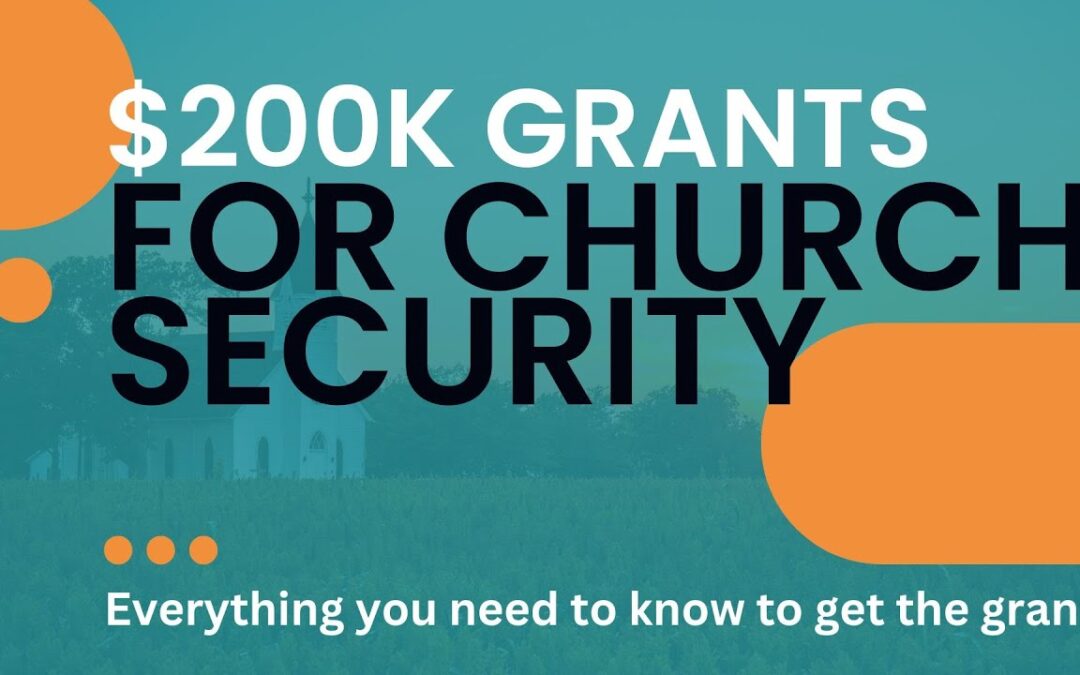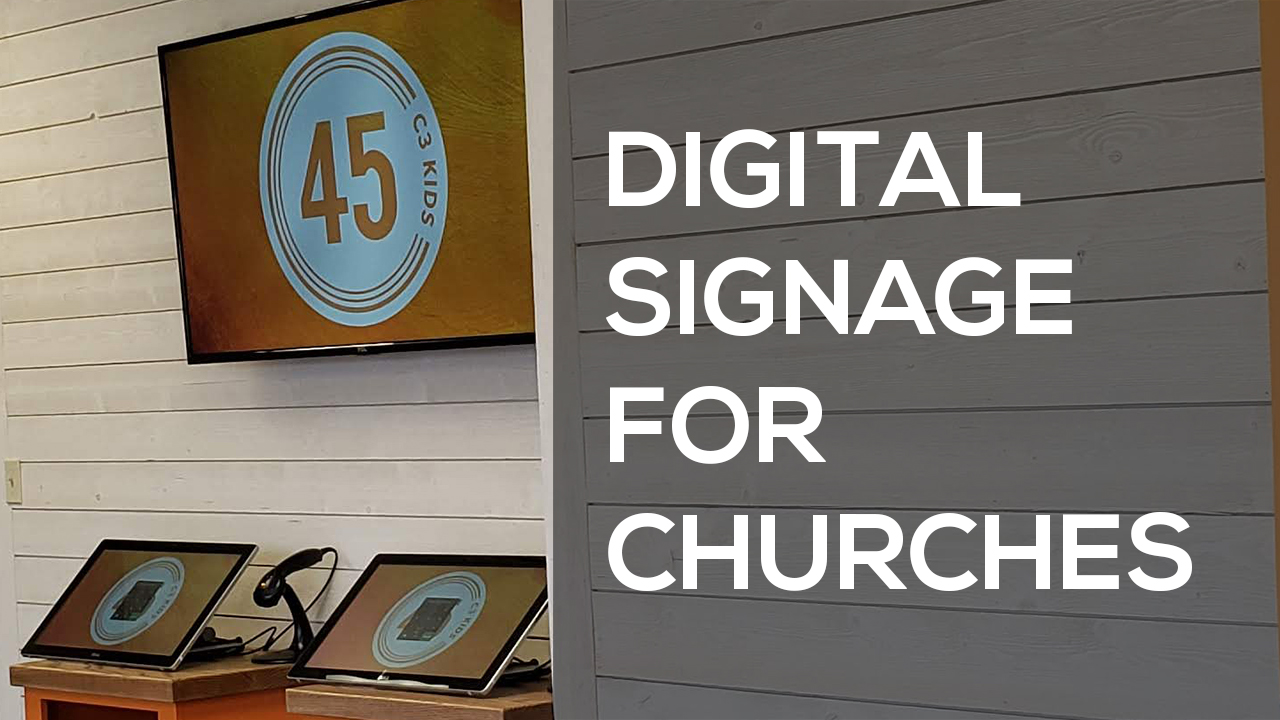The Nonprofit Security Grant Program (NSGP), funded by the U.S. Department of Homeland Security (DHS) and administered by FEMA, is a federal initiative designed to help nonprofit organizations, including churches, enhance their security. With growing security challenges facing churches across the United States, the NSGP offers essential support to address both physical and cybersecurity needs. For 2024, the program provides $274.5 million in funding, divided into two streams: the NSGP-Urban Area (NSGP-UA) and the NSGP-State (NSGP-S) funding streams. Understanding the distinctions between these funding streams can help churches navigate the application process, identify which funding best fits their location, and maximize the program’s benefits.
In this guide, we’ll explore the differences between the Urban and State funding streams, explain the unique requirements and benefits of each, and offer practical guidance for churches applying for NSGP support.
Overview of NSGP: Supporting Security for At-Risk Churches
The NSGP was created to provide security funding to nonprofit organizations at risk of terrorist attacks, including faith-based organizations. For churches, this funding supports a range of security improvements, from physical security enhancements like surveillance systems to cybersecurity measures and emergency preparedness training. As places of worship, churches are often soft targets, welcoming congregants and visitors alike, which presents specific security challenges. The NSGP enables churches to take proactive steps toward safeguarding their facilities and ensuring a safe environment for their congregations.
To address the needs of both urban and rural areas, NSGP divides its funding between two distinct subprograms:
- NSGP-UA (Urban Area Funding): Allocated for nonprofit organizations located in designated high-risk urban areas.
- NSGP-S (State Funding): Available to nonprofits located outside of these high-risk urban areas.
Each funding stream is structured to address the unique security needs of nonprofits based on location and risk level, ensuring equitable distribution of resources nationwide.
NSGP-Urban Area (NSGP-UA): Funding for Churches in High-Risk Urban Areas
The NSGP-UA stream is designed to provide security funding to churches and other nonprofits within DHS-designated high-risk urban areas. Urban areas are often considered high-risk because of their population density, public visibility, and increased likelihood of security incidents.
Key Details of NSGP-UA Funding:
- Total Funding Allocation: $137.25 million, earmarked specifically for high-risk urban areas.
- Eligibility: Nonprofit organizations, including churches, located within high-risk urban zones identified by DHS’s Urban Area Security Initiative (UASI).
- Funding Cap: Each church can apply for up to $150,000 per location, with a maximum of three locations per application.
Since urban areas are densely populated, security risks for churches include a heightened risk of targeted attacks, property crimes, and cybersecurity threats due to public visibility. Churches in these areas may serve a diverse and transient population, which can increase the complexity of security planning and heighten the need for visible deterrents, emergency protocols, and robust physical and digital protections.
How NSGP-UA Funding Can Help Churches in Urban Areas:
- Enhanced Surveillance Systems: Urban churches often have more foot traffic and greater exposure to potential security threats. Installing CCTV systems can help monitor high-traffic areas, providing both deterrence and evidence in case of incidents.
- Access Control and Physical Barriers: Access control systems, like keypad or keycard entries, can restrict entry to sensitive areas within the church, such as administrative offices or archives, where congregational records are stored.
- Emergency Preparedness Training: High-risk urban churches can use NSGP-UA funds for staff training in emergency protocols, such as active shooter response and evacuation plans, ensuring they’re prepared for a range of scenarios.
- Cybersecurity Measures: With urban churches often using digital tools for donations and communications, cybersecurity enhancements like firewalls, data encryption, and staff training can protect sensitive data.
For churches located in high-risk urban areas, NSGP-UA funding is tailored to meet the challenges that come with operating in a densely populated environment. This funding stream allows churches to invest in comprehensive security measures that address physical vulnerabilities while also safeguarding digital assets.
NSGP-State (NSGP-S): Funding for Churches Outside High-Risk Urban Areas
The NSGP-S stream is designed for nonprofit organizations, including churches, located outside DHS-designated high-risk urban areas. This funding stream ensures that churches in rural, suburban, or less densely populated regions have access to essential security resources to protect their congregations.
Key Details of NSGP-S Funding:
- Total Funding Allocation: $137.25 million, reserved for churches and other nonprofits in non-urban areas.
- Eligibility: Nonprofits, including churches, located outside high-risk urban zones.
- Funding Cap: Each church may apply for up to $150,000 per location, with a maximum of three locations per application.
Churches in non-urban areas face unique security challenges, such as limited access to local law enforcement, fewer on-site security resources, and heightened vulnerability due to isolated locations. Rural churches, in particular, may have fewer visitors and limited technology infrastructure, but they still require security measures that ensure the safety of congregants and church property.
How NSGP-S Funding Can Help Churches in Non-Urban Areas:
- Perimeter Security and Fencing: Churches in rural or isolated areas can use NSGP-S funds to install fencing, bollards, or other perimeter barriers to control access to the property and deter intruders.
- Alarm and Intrusion Detection Systems: These systems are valuable for churches located farther from emergency services, as they can alert law enforcement immediately in the event of unauthorized access or break-ins.
- Emergency Communication Systems: Rural churches may have fewer staff members on-site at all times, so communication systems like intercoms, mobile alerts, or public address systems can be critical in notifying members and staff of emergencies.
- Cybersecurity for Digital Records: While rural churches may not have the same digital exposure as urban ones, cybersecurity measures, such as firewalls, antivirus software, and encrypted backups, are essential for safeguarding membership records and donation information.
For churches in non-urban areas, NSGP-S funding provides a way to address unique security concerns. By focusing on both physical and digital vulnerabilities, churches can create a safer worship environment regardless of their location.
Comparing Urban and State Funding Streams: Key Differences and Considerations for Churches
Understanding the distinctions between the NSGP-UA and NSGP-S funding streams can help churches determine which program best suits their needs. Here are the main differences and considerations:
| Feature | NSGP-UA (Urban Area) | NSGP-S (State) |
|---|---|---|
| Target Area | High-risk urban areas designated by DHS | Non-urban areas outside of DHS-designated zones |
| Total Funding | $137.25 million | $137.25 million |
| Funding Cap per Site | $150,000 per site | $150,000 per site |
| Application Process | Applications submitted via State Administrative Agency (SAA) | Applications submitted via SAA |
| Specific Focus | Higher risk of targeted attacks, dense population centers | Rural or suburban security needs, limited local resources |
| Example Security Needs | CCTV, access control, emergency response training | Perimeter security, alarm systems, backup communications |
Each stream offers up to $150,000 per location, but it’s essential to apply under the correct funding stream based on the church’s location. Churches in both urban and rural areas have distinct security needs, and selecting the appropriate funding stream enables churches to maximize the impact of NSGP support.
How Churches Can Apply for NSGP Funding
Applying for NSGP funding requires preparation and coordination with the State Administrative Agency (SAA), which manages the application process for each state. Here are the key steps for churches interested in applying for either the NSGP-UA or NSGP-S funding stream:
Step 1: Conduct a Vulnerability Assessment
A vulnerability assessment is essential for the application, as it documents specific security risks the church faces. This assessment should consider factors like entry points, emergency response capabilities, and existing cybersecurity measures. The vulnerability assessment forms the basis for identifying security improvements needed to protect congregants, staff, and property.
Step 2: Prepare the Investment Justification (IJ)
The Investment Justification (IJ) is a detailed outline of the church’s proposed security projects. Each project must address a vulnerability identified in the assessment, showing how it will mitigate risks effectively. The IJ should include:
- Descriptions of each security improvement, such as surveillance systems, access control, or training programs.
- Budget estimates for each project to provide clear financial planning.
- Timeline and Feasibility: Projects should be feasible to complete within the grant’s performance period (36 months).
The IJ serves as the core of the NSGP application, connecting each security enhancement to documented needs and projected outcomes.
Step 3: Submit the Application through the SAA
Churches must submit their applications through their State Administrative Agency (SAA), which reviews and prioritizes applications before submitting them to FEMA. Each state may have specific requirements or deadlines, so churches should reach out to their SAA early in the process to ensure compliance.
Step 4: Complete and Finalize the Application Package
In addition to the vulnerability assessment and IJ, churches may need to include other documents, such as their mission statement or additional forms required by the SAA. Verifying that all materials are complete and accurate is essential for meeting application requirements.
Important Dates for FY 2024 NSGP
For churches applying to either NSGP-UA or NSGP-S, keeping track of key deadlines is critical:
- Application Start Date: April 16, 2024
- Final Submission Deadline to FEMA: June 24, 2024, at 5:00 PM ET
- Award Notification: No later than September 30, 2024
SAAs often set earlier deadlines to review applications, so churches should confirm these dates with their respective agency to avoid missing any requirements.
Tips for a Successful NSGP Application
- Link Security Projects to Risks: Ensure each proposed security project directly addresses risks identified in the vulnerability assessment. This clear connection strengthens the application and shows the church’s proactive approach to risk mitigation.
- Prioritize High-Impact Projects: Since NSGP funds may be limited, prioritize projects with the greatest potential for improving security, such as installing surveillance systems, reinforcing entry points, or providing emergency response training.
- Engage with Local Law Enforcement: Many SAAs encourage coordination with local law enforcement or security experts. Their insights can support the vulnerability assessment and may strengthen the application.
- Ensure Documentation Accuracy: Double-check all required documentation and submission guidelines to avoid delays. Accurate and complete information improves the application’s clarity and credibility.
Conclusion: Choosing the Right NSGP Funding Stream for Church Security
Whether a church is located in a bustling urban area or a quiet rural setting, security is a universal need. The NSGP offers targeted funding through its Urban Area and State funding streams, each designed to meet the unique security challenges faced by churches across the country. By understanding the distinctions between NSGP-UA and NSGP-S, churches can apply for the most appropriate funding stream and take advantage of federal resources to improve safety for their congregants and staff.
NSGP funding enables churches to invest in both physical and cybersecurity measures, providing peace of mind and a secure worship environment. For faith communities that prioritize security, NSGP support offers a powerful tool to continue their mission with confidence and resilience.




